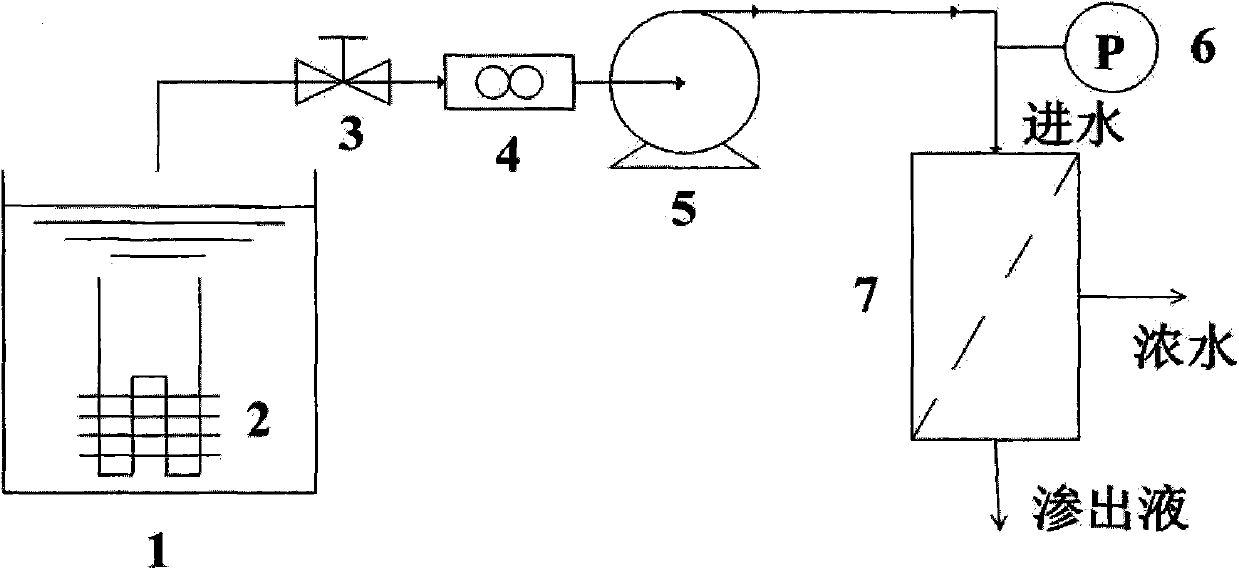Method of treating strontium and cesium in radioactive wastewater by small-sized low-pressure reverse osmosis system
A radioactive wastewater and low-pressure reverse osmosis technology, applied in the field of water treatment, can solve the problems of large radioactive waste production, huge equipment, high cost, etc., and achieve high interception rate, low energy consumption, and broad application prospects
- Summary
- Abstract
- Description
- Claims
- Application Information
AI Technical Summary
Problems solved by technology
Method used
Image
Examples
Embodiment 1
[0011] will contain 100 μg L -1 Strontium, 100 μg L -1 The cesium raw material is hydraulically injected into the above membrane module, the operating temperature is 25±1°C, the filtration pressure is 1.0Mpa, the retention rate of strontium in the exudate is 94.5%, the retention rate of cesium is 76.1%, and the system recovery rate is 38.5%.
Embodiment 2
[0013] will contain 100 μg L -1 Strontium, 100 μg L -1 The cesium raw material is hydraulically injected into the above-mentioned membrane module, the operating temperature is 25±1°C, the filtration pressure is 0.9Mpa, the retention rate of strontium in the exudate is 94.2%, the retention rate of cesium is 75.7%, and the system recovery rate is 38.0%.
Embodiment 3
[0015] will contain 100 μg L -1 Strontium, 100 μg L -1 Cesium raw material is hydraulically injected into the above-mentioned membrane module, the operating temperature is 25±1°C, the filtration pressure is 0.75Mpa, the retention rate of strontium in the exudate is 93.5%, the retention rate of cesium is 75.2%, and the system recovery rate is 37.2%.
PUM
 Login to View More
Login to View More Abstract
Description
Claims
Application Information
 Login to View More
Login to View More - R&D
- Intellectual Property
- Life Sciences
- Materials
- Tech Scout
- Unparalleled Data Quality
- Higher Quality Content
- 60% Fewer Hallucinations
Browse by: Latest US Patents, China's latest patents, Technical Efficacy Thesaurus, Application Domain, Technology Topic, Popular Technical Reports.
© 2025 PatSnap. All rights reserved.Legal|Privacy policy|Modern Slavery Act Transparency Statement|Sitemap|About US| Contact US: help@patsnap.com

